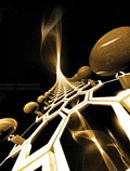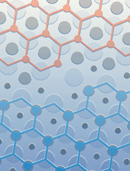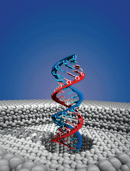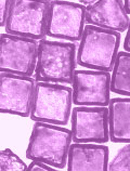Focus
Selected highlights
Since it was launched in October 2006, Nature Nanotechnology has published papers on a wide range of topics within nanoscience and technology. This web focus brings together all the papers we have published in four particularly active areas — DNA nanotechnology, graphene, nanopores and nanotoxicology — along with articles on the public perceptions of nanotechnology.
Editorial:
The story so far FREE
doi:10.1038/nnano.2011.181
Basic research in nanoscience and technology is flourishing, but obstacles to real-world applications remain.
Abstract - The story so far | Full text - The story so far | PDF (63 KB) - The story so far
Thesis:
Democratizing nanotechnology, then and now
Chris Toumey
doi:10.1038/nnano.2011.168
What progress has been made in efforts to engage the public in decisions about nanotechnology over the past five years?
Full text - Democratizing nanotechnology, then and now | PDF (267 KB) - Democratizing nanotechnology, then and now
Feature:
Back to the future
Peter Rodgers
doi:10.1038/nnano.2011.179
The first issue of Nature Nanotechnology contained seven research papers. We catch up with the authors of those papers and ask how nanotechnology has changed since then.
Abstract - Back to the future | Full text - Back to the future | PDF (719 KB) - Back to the future
DNA nanotechnology

The ability of DNA to self-assemble into a variety of nanostructures and nanomachines is highlighted in a growing number of papers in Nature Nanotechnology. The appeal of DNA to nanoscientists is threefold: first, it is a natural nanoscale material; second, a large number of techniques for studying DNA are already available; and third, its ability to carry information can be exploited in the self-assembly process. DNA is also increasingly being used to organize other nanomaterials, and the related field of RNA nanotechnology is beginning to emerge.
Graphene

Graphene has been among the fastest growing areas of nanoscience and technology in recent years. This two-dimensional hexagonal lattice of carbon atoms has been found to have remarkable physical and chemical properties, and is also being considered for applications in areas as diverse as plastic packaging and next-generation gigahertz transistors.
Nanopores

Nanopore-based sensors allow DNA and other biomolecules to be analysed with subnanometre resolution and without the need for labels or amplification. Researchers are working on naturally occurring biological nanopores, solid-state nanopores and hybrids of the two, along with a variety of new readout methods. The ultimate goal of this research is to be able to rapidly and reliably sequence the human genome for under $1,000.
Nanotoxicology

Two decades of nanotoxicology research has shown that the interactions between nanomaterials and cells, animals, humans and the environment are remarkably complex. Researchers are still trying to understand in detail how the physical, chemical and other properties of nanomaterials influence these interactions, and thus determine the ultimate impact of nanomaterials on health and the environment. And as new nanomaterials are developed, and animal testing is reduced, computational methods are becoming increasingly important for prioritizing safety studies. There is also an ongoing debate about the regulation of nanomaterials.
Produced with support from Chinese Academy of Sciences Key Laboratory for Biomedical Effects of Nanomaterials and Nanosafety
Public perceptions of nanotechnology

Research into public perceptions of nanotechnology is becoming more rigorous with social scientists developing and testing increasingly complex theoretical models. Researchers have explored, among other things, how the public's reaction to nanotechnology depends on cultural predispositions, religiosity and the specific application of the new technology. It is clear that increased public awareness of nanotechnology will not, on its own, automatically lead to widespread public acceptance.
